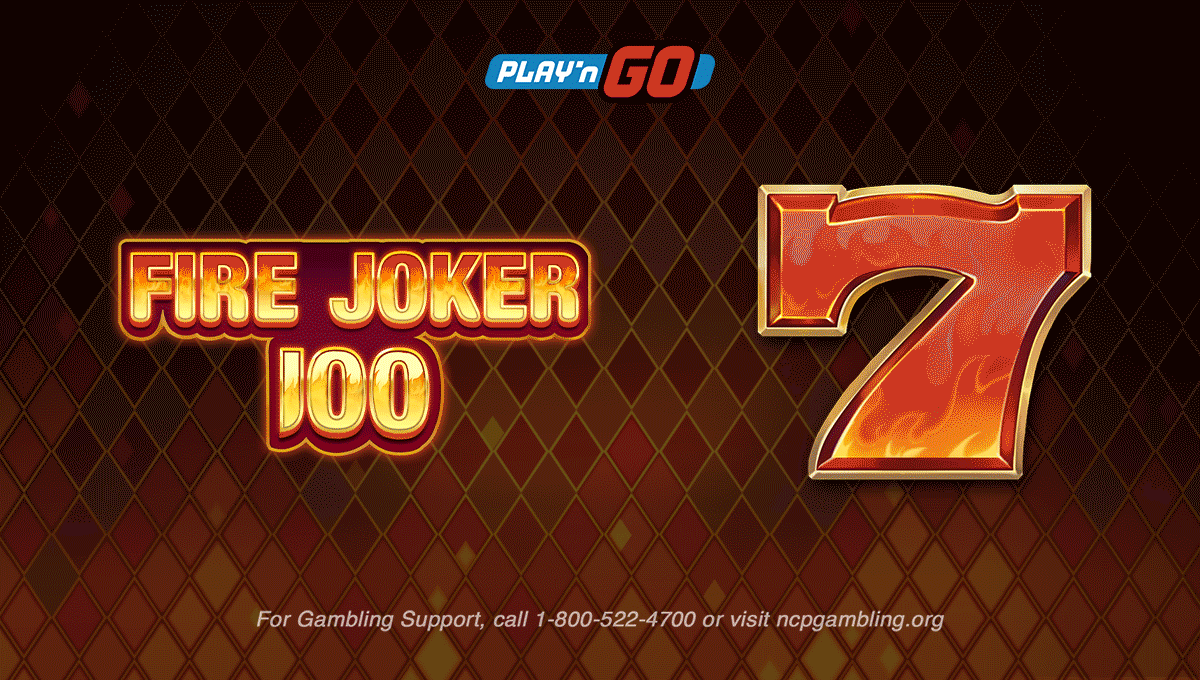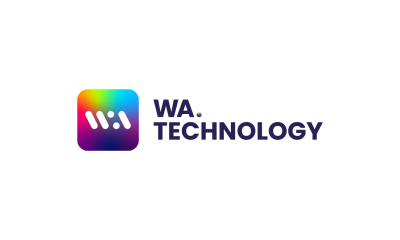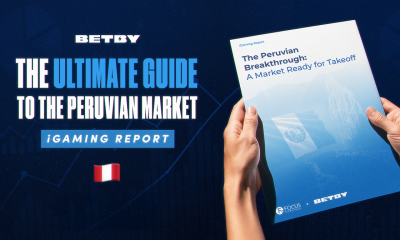Interviews
Axel Antillon: Our Peru entry is a major milestone for WA.Technology

What opportunities has WA.Technology identified in the Peru market? Why was this an attractive expansion opportunity?
The Peruvian market is an incredibly attractive opportunity for WA.Technology, for many reasons. The market is home to a large, fast-growing, tech-savvy audience that has an ever-growing disposable income available to enjoy gaming.
The Peruvian market is also no stranger to gambling regulation. Land-based casinos have been legalised in Peru since 1979; this legislation formed a solid foundation for many other LatAm markets to introduce similar regulations for brick-and-mortar venues.
Online regulations have been introduced much more recently, in October 2023, following approval from the regulator, MINCETUR. As you can imagine, this means that much of the population has a level of awareness of the different gambling products available to them.
Another key factor is the growing usage of social media platforms among players. In Peru, social media usage has surpassed eight hours a day – this provides an important opportunity for operators to be able to establish communications with players and, ultimately, build brand exposure. Growing internet and smartphone penetration across the country also presents a huge opportunity for the growth and development of the gambling industry. It is estimated that smartphone penetration is approximately 1.2 phones per person, making the type of online gambling we’d expect in Europe and North America quickly available further south.
Why has now been the right time to enter Peru?
As they say, there’s no better time than the present! We already have a strong presence in LatAm. The introduction of regulations that govern the online gambling space in Peru has opened up new doors for us to expand our footprint across the region.
Peru’s regulatory framework makes this market the perfect opportunity for WA.Technology to bring our expertise to operators across this nascent market. With more and more operators entering Peru (the last time I checked, there were 145 licence applications), we knew that there would be a demand for platform providers that can offer the full package of iGaming solutions. WA.Technology is perfectly placed to deliver exactly that.
Our full spectrum of products and solutions – which includes WA.Platform, WA.Sports, WA.Casino, WA.Fantasy, WA.Affiliates and WA.Lottery – will allow sportsbooks and casinos across Peru to revolutionise the way they engage with bettors by facilitating new levels of personalisation and localisation.
How do you plan to stand out from the crowd? What are your key USPs for this market?
WA.Technology has three key aspects that will give us a true edge in the Peru gaming market, making us the best proposition available for operators. The first is that we are the only iGaming provider that fully understands the importance of localisation. We are a global business, but we act locally – as well as boasting nearly two decades on the continent.
In short, we are incredibly well versed in the intricacies of the LatAm market, and how best to navigate the unique gaming culture in Peru. We also have a team based in Trujillo, which gives us a solid base of operation and allows us to stay up to date on developments on the ground.
The second aspect is the quality of the platform that we have. The WA.Technology is second to none; our products and solutions are highly customisable and scalable, each tailored to the unique needs of each of our partners.
We also offer best-in-class technology, backed by our team of top-level professionals, which utilises artificial intelligence to create the most efficient, streamlined products for our partners. This combination of expertise and cutting-edge technology gives WA.Technology an edge in the Peruvian market and allows us to stay ahead of any changing trends.
The final aspect is the support that we can offer to our partners. Operators are not just purchasing a product from WA.Technology; they are getting a full package of iGaming solutions. By partnering with us, operators will gain access to a wealth of knowledge and round-the-clock support that no other provider on the market can offer.
In addition to our platform, our partners also benefit from our team’s extensive gaming experience. Not only do they receive the full spectrum of support when launching and executing their growth strategies – but we’re also able to seamlessly integrate our best-in-class technology, no matter what the local tech challenges, as we understand LatAm better than anyone else.
How will your previous experience in LatAm shape your Peru strategy?
Our experience in LatAm, and other markets around the world, has provided us with a deep pool of knowledge that will most certainly influence our value proposition and our ability to offer operators the best possible solutions based on their own unique requirements.
WA.Technology knows just how important localisation and personalisation are to creating stand-out experiences. This isn’t just applicable to LatAm, but rather to every market that is regulated. We are very fortunate that we can tap into our local team to ensure that we have a deep understanding of the cultural, social and economic dynamics of the market.
We know that in order to engage and retain players, we cannot offer a standardised set of products – each product and solution must be tailored, in collaboration with our partners, to allow them to achieve their company goals.
What have been some of the biggest trends within the Peruvian gaming market? And how does WA.Technology plan to capitalise on these?
Something to keep in mind is that the Peruvian market is incredibly diverse, so it is hard to pinpoint a small number of trends that are shaping the market. But there are two which I believe should be mentioned: the first is the growth in provinces outside of Lima.
Lima, the capital city, has long been the centre of operations in Peru. But the city has become increasingly saturated, with many operators focusing their attention here.
In recent years, we’ve seen particular growth in cities such as Arequipa, Ica and Moquegua, and with that, significant technological advances and growing acceptance of gambling activities. This growth looks as though it will continue long into the future, which I believe will bring plenty more opportunities for expansion in Peru.
The second trend I’ve noticed comes down to players’ behaviour. The grouping in digital tribes is becoming much more noticeable, especially as we can analyse behaviours across different demographics.
At WA.Technology, we have identified more than 40 different demographics of players and more than 60 different psychological biases that impact how players engage with gambling activity. With those insights, we can understand what stimuli can impact player behaviours and adjust our products accordingly.
WA.Technology’s commitment to compliance and social responsibility
WA.Technology is a dedicated B2B service provider that upholds a strong compliance culture and encourages social responsibility and responsible gaming. Our marketing efforts support partners in upholding ethical standards, reflecting a commitment to integrity, transparency and the well-being of the gaming community. WA.Technology encourages safe and responsible gaming environments by offering products and services that adhere to regulatory compliance and responsible marketing.
Interviews
The White Label Dilemma: Finding the Right Balance for Your iGaming Business

It’s not just black and white label
Yoni Sidi, CEO at Wiztech, says white labels are all about striking the balance between pros and cons, but for some, it’s impossible to achieve and that’s why it’s important to consider other options.
For most operators, a white label solution seems to offer the best route to market. But is that actually the case?
I’ve been working in the industry for more than two decades now, and over that time, I’ve worked on both sides of the fence – so on the white label operator side and on the white label provider side. This gives me a deep understanding of the pros and cons of white label solutions, and this understanding ultimately led me to launch Wiztech. To answer your question more directly, white labels are always about striking the balance between the pros and cons they present – for some operators, a balance can be found, but for others, it can’t. Ultimately, it comes down to knowing what you want from your platform or technology stack, and whether a white label can meet those requirements with the budget and resources you have available to you.
So, what are the pros and cons of a white label platform?
There are plenty of upsides to white labels, and that’s why they’re used by so many operators. The main advantages are speed to market and cost effectiveness – you can literally go from first discussions to your online casino being live in a matter of weeks. The upfront fees are relatively small, and, in most cases, you pay a revenue share back to the platform provider. This can tighten margins a little, but it means you don’t have to have a large capital reserve to get going. Another benefit is that you can take on as much or as little of the operation as you like – for some, they will let the platform provider take care of the operational aspect while they focus solely on marketing and customer acquisition. Other upsides include licensing, with the white label partner securing and being responsible for the licences they hold.
Drawbacks. The biggest for me is the lack of differentiation you get with a white label. The many brands that run on the platform often look very much the same, just with different logos and branding. After a few months of operating your online casino, you’ll likely notice friction points that you’ll want to address, but the rigid nature of white-label platforms means it’s incredibly difficult to smooth out even the smallest of bumps in the road. It’s also incredibly difficult to roll out unique features and functionality as the development team is usually working through a backlog of requests – most of which are for the friction bumps that need ironing out. Factor in the frequent regulatory changes that happen, and the need for the development team to respond to them, and it’s easy to see how hard it can be to improve the experience being offered to players.
How can operators strike a balance between the pros and cons of white labels?
It comes down to understanding the capabilities of the platform provider and whether they offer customisation and localisation. If they don’t, the operator needs to determine if this is a price they’re willing to pay in exchange for the speed to market and cost effectiveness that white labels provide. Of course, some white label providers do offer support and are happy to help when it comes to developing and deploying bespoke features and functionality. But in my experience, most don’t have the capacity for this, even if they say they do. For me, the balance is found by accepting the limitations of white labels and working within the (often pretty rigid framework) they provide. There are plenty of examples of operators that have done this and have gone on to run very successful brands in highly competitive markets.
Is there an alternative to white labels?
The most obvious alternative is to develop a proprietary technology stack, but this approach comes with just as many, if not more, pitfalls. Building a platform from the ground up is incredibly expensive and tremendously risky, and this is why so few operators outside of the industry power players have been able to pull it off. And even those that do often encounter issues such as ongoing maintenance, tech debt, staffing and compliance. But there is a middle ground between white label and proprietary, and it can be found with smaller platform providers whose technologies offer the agility, flexibility and adaptability required for operators to launch highly customised, almost bespoke, online casinos and sportsbooks.
How does Wiztech fit into the platform mix, and how do you support your partners in achieving their goals in often highly competitive markets?
At Wiztech, we champion modular tech and the likes of AI and automation. By embracing these, we have been able to build powerful yet highly customisable casino and sportsbook solutions that are also fully compliant in tightly regulated markets. In our experience, being able to quickly respond to regulatory changes provides a competitive advantage to our customers. In Mexico, for example, our client Winpot has been able to deliver a unique player experience while always ensuring compliance. And this is against a backdrop where regulatory changes often come with very little notice. Our technology can adapt quickly while Winpot continues to capitalise on the growing demand for entertaining online casino products and experiences.
But just as important as our technology is our approach to our partners. This sees us undertake a comprehensive onboarding process where we spend a lot of time understanding the client’s “why” before we map out the “what” and the “how”. This has proved to be incredibly effective and ensures that our clients can get the most out of the flexibility of our platform and the high levels of customisation and personalisation it provides.
Interviews
Getting to Know Incline Gaming Marketing with Chief Commercial Officer Jo Dennis

Incline Gaming Marketing is redefining how gambling brands scale and succeed worldwide. Founded by industry veteran Peter Laverick, the agency delivers end-to-end digital marketing services across user acquisition, CRM, and creative. In this interview, CCO Jo Dennis explains how Incline acts as an extension of operators’ in-house teams, helping them acquire players, boost retention, and compete globally.
Incline Gaming Marketing. Tells us what we need to know about the business.
Incline Gaming Marketing (Incline) is a full-service digital marketing partner dedicated exclusively to the regulated gambling industry. We’re not just a supplier of campaigns or assets, we run marketing operations end-to-end for our partners, functioning as an extension of their in-house team.
Our expertise spans user acquisition, CRM, and creative, delivered by specialists who’ve worked inside top operators and suppliers. With offices in San Francisco, Philadelphia, and London, we provide market-specific strategies and execution for brands in North America, Europe, Africa, Australia, and beyond.
Founded by industry veteran Peter Laverick in 2020, Incline is part of The Conexus Group alongside Pentasia (recruitment) and Partis (strategy and M&A). Our partners range from household-name operators to ambitious new entrants, all looking for a team that can step in, own the process, and deliver measurable results from day one.
Who are the main players running the business day to day?
Peter Laverick, our CEO and founder, has led marketing at some of the industry’s biggest names, including BetVictor, Aristocrat, and PlayStudios. Chief Commercial Officer Jo Dennis joined through our acquisition of Random Colour Animal in 2024 (RCA was originally founded in 2018) and brings more than 25 years in brand and marketing strategy.
Chief Marketing Officer Oren Langburt has over 15 years’ experience in real-money gaming, including leading marketing at FanDuel. VP Partner Success Haig Sakouyan is a 20+ year industry veteran, ensuring our partnerships deliver beyond marketing.
Talk us through Incline Gaming Marketing’s core service offering.
We operate in three connected disciplines that together form a complete managed marketing service:
- User Acquisition (UA): We plan, execute, and optimise campaigns across Meta, Google, TikTok, Snapchat, Apple, and programmatic networks, managing multi-million-dollar budgets. As an approved Facebook Business Partner, we’ve been rated the most effective media buyer in North America’s online gaming sector, achieving a 99.9% efficiency score.
- Customer Relationship Marketing (CRM): Our CRM specialists handle the full player lifecycle — from onboarding and first-time deposit conversion to long-term retention and reactivation. We combine data-led segmentation with targeted offers and creative to grow lifetime value while controlling bonus spend.
- Creative: We produce more than 1,000 assets per month, from brand identities and websites to broadcast-quality TV spots, slot game creatives, supplier content packs, and conference materials. All creative is performance-driven and integrated into UA and CRM campaigns for maximum impact.
When combined, these services allow us to act as a partner’s complete marketing department – – strategy, execution, and optimisation under one roof.
Which markets are you focused on? Are you pushing into any new regions?
We built our reputation in North America, where we work with leading land-based and online operators across casino, sportsbook, lottery, social gaming, and daily fantasy sports. We now deliver integrated managed services in Canada, the UK, continental Europe, Africa, and Australia, tailoring each approach to local regulations, player behaviours, and market dynamics.
For many partners, this means we handle all marketing in new markets from day one – avoiding the time and cost of building a local team – and then continue as their long-term, embedded marketing function.
Why are your services particularly valuable to operators in the current industry climate?
Player acquisition costs are rising, retention is harder than ever, and regulatory pressure is mounting. Building and managing an in-house team with the full range of skills required – from media buying to lifecycle marketing to creative production – is expensive and slow.
Incline solves that. We provide an instant, proven marketing department with deep gambling expertise, multi-channel capabilities, and global reach. Our managed services model means we don’t just advise, we execute, optimise, and deliver results. Whether launching in a new jurisdiction or scaling in a mature one, we know the levers to pull for sustainable growth.
What can we expect from Incline in the second half of the year?
We’re deepening our presence in Europe, Africa, and Canada while cementing our leadership in North America. Several major launches and brand refresh projects are underway, alongside scaled acquisition and retention campaigns for our long-term partners.
Our focus remains the same — provide operators and suppliers with a high-performing, fully managed marketing function that delivers measurable results faster, and with more certainty, than building it in-house.
Interviews
Getting to know Dreidel
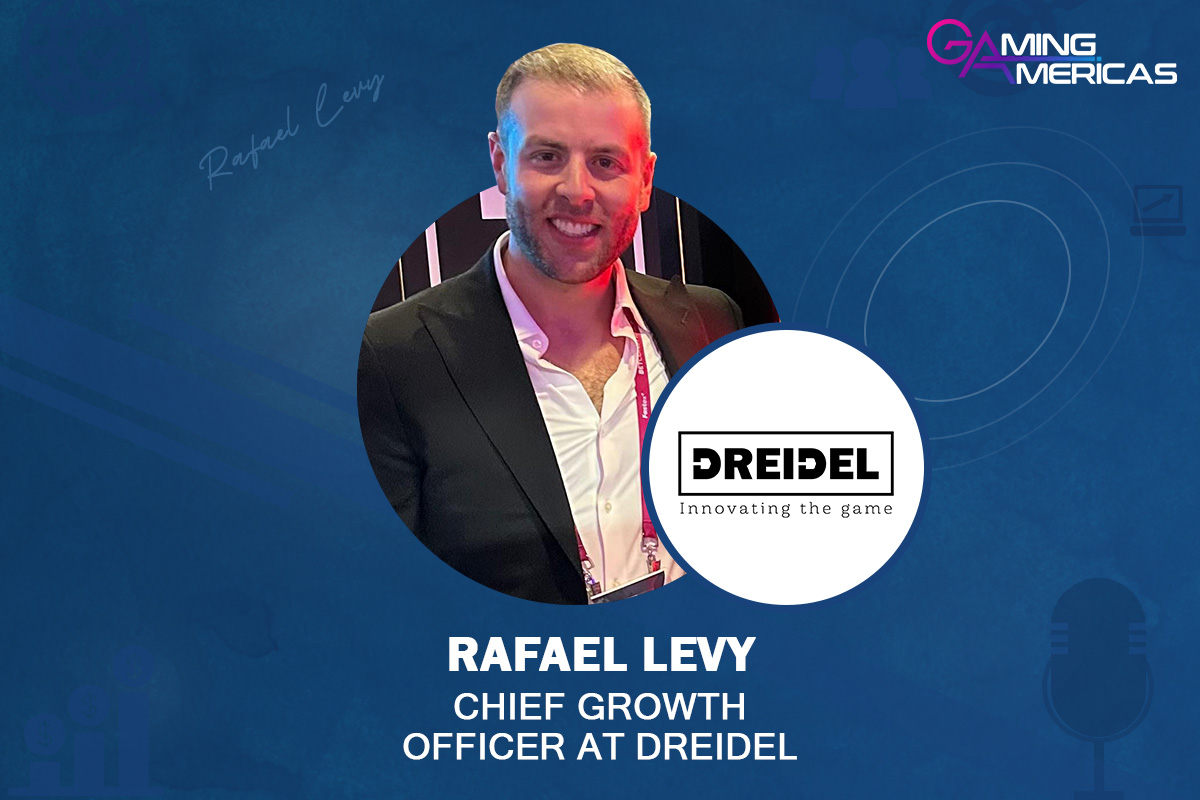
We sit down with Rafael Levy, Chief Growth Officer at Dreidel, to learn more about how the rising start slot machine manufacturer from Mexico is taking the market by storm.
For those who haven’t heard of Dreidel, who are you, and what products do you offer to the industry?
We are a proudly Mexican company that’s been designing and producing land-based slots since early 2020. Recently, we’ve expanded our offering into the online space for the first time. From day one, our mission has been to bring innovation and quality to the land-based gaming market in Mexico, and we’ve done this by making sure we have a deep understanding of player and operator needs through the hands-on experience of our team and constant iteration and improvement of our products. What sets us apart – indeed, I’d say it’s our superpower – is the highly experienced team we have built at Dreidel, with everyone having worked directly in the field. This has allowed us to learn not only from the successes we have enjoyed but also from the challenges we have faced and overcome along the way.
Can you describe your approach to slot development?
Rather than develop products in isolation, we take a meticulous and practical approach to understanding the dynamics of the market we are in, especially when it comes to what the player expects from a slot game. By doing this, we’ve been able to put innovation at the foundation of our approach to development, which in turn allows us to consistently evolve our games and cabinets so they deliver fresh, engaging and differentiated experiences that hit the mark with players. Ultimately, our products for both land-based and online are born out of real-world insight and combine quality with creativity to ensure we not only meet but exceed player expectations. Because we are a young company, we’ve been able to use and leverage the latest technologies, and this has helped us deliver a superior product and ultimately build massive momentum behind the business.
Just how important is it to read the market and understand what players and operators are looking for?
It’s very important, and that’s why it’s a fundamental pillar at Dreidel. We have developed a process that allows us to read the market with precision and agility, and then easily feed that insight into our development cycle. We know that we operate in a highly dynamic environment where player preferences can shift quickly, driven by trends, global influences and evolving technologies. This is why we invest so heavily in continuous market research and pay close attention to player and operator feedback, as this enables us to act fast, adapt effectively and launch innovative products that stand out and gain traction from day one.
You mentioned your team as being critical to the early success you have achieved. Who are the key people behind the business?
Dreidel was formed as a joint initiative by a group of entrepreneurs with extensive operational experience in the gaming industry. This includes Isaac Shemaria and Moisés Shemaria, who came up with the initial idea for the business. Since our launch in 2020, we have grown with a structure that balances an ambitious strategic vision with strong on-the-ground execution. Today, the company is led by José Shemaria and Rafael Levy, and has a highly skilled multidisciplinary team driving key areas of the business.
The direction of the project is led by a collaborative leadership group that ensures every decision is aligned with our long-term goals. This synergy allows us to maintain a strong commercial focus, efficient operations, and sound financial planning, all aimed at meeting the evolving needs of the market. It’s worth highlighting our technology and innovation team, which plays a vital role in developing unique gaming experiences, turning ideas into functional products that resonate with both operators and players. This is complemented by the daily work of our developers, technicians, operators and commercial staff, who bring deep industry knowledge to ensure our products reach the market with both impact and quality.
We firmly believe that our true value lies in the strength of our collective talent. Every area and every person play a key role in turning ideas into reality. This integration of strategy, creativity, execution, and consumer insight is what has shaped our growth and continues to drive our success in such a competitive industry.
You’ve quickly established Dreidel as a leading slot machine manufacturer in Mexico. How did you do this, and what sets your product apart?
The market-leading position we have achieved is the result of a long, challenging yet rewarding journey. It’s been a step-by-step process, marked by both setbacks and incredible achievements, all of which have shaped us into the company that we are today. What sets us apart from other suppliers? I’d say it’s our ability to deeply understand and analyse what players want and enjoy. We don’t create generic products, we listen to the end user, study their behaviour, preferences, and playing habits, and design games that resonate with them on a personal level.
We focus on meeting the unique demands of the gaming sector, tailoring our offerings for each market we target. Mexico is our primary market, but we are making moves into other LatAm markets and North America, too. Our goal is to deliver games that are not only innovative in terms of technology and design but also captivating for the player, grabbing their attention from the very first spin to the last.
Today, we offer Class III products that are ranked among the top performers in the Mexican market. That leading position is the result of a clear vision, a player-focused approach and a passionate team committed to creating experiences that truly stand out.
What makes the land-based slot market so difficult to crack?
The land-based slot machine market is one of the most complex and demanding areas within the gaming industry, mainly due to the high barriers to entry, both technological and regulatory. It’s not enough to have a good idea; you need a product that is technically solid, commercially viable and fully compliant with strict industry standards.
One of our biggest challenges was developing the right product, one that would truly succeed in the market. This required significant investment in research, development, certifications and continuous testing. We also faced the challenge of competing against well-established brands, which pushed us to stand out not just through innovation, but through product quality and a deep understanding of the player.
We overcame these challenges by being patient, strategic and consistent. We had to earn the trust of operators and players one step at a time, proving that our products meet the highest standards while also delivering unique experiences that resonate with end users. It’s been a journey of perseverance, but one with highly rewarding results.
What is your top-performing game, and what made it so popular?
Our top-performing game is Imperial Ascension, a Class III title that stands out for its innovation and its ability to truly engage players. It’s more than just a slot game—it’s an immersive experience that captures attention through its functionality, visual appeal and the excitement it creates.
What has made Imperial Ascension such a success is its unique touch: it offers high rewards and a strong element of mystery that keeps players engaged throughout their session. The game continuously surprises players with multiple progressive jackpots embedded within the gameplay, which not only increases anticipation but also significantly boosts the potential for big wins. This combination of innovation, excitement and rewarding mechanics has made it one of our standout titles.
You also have a portfolio of online slots. What are your plans for the online segment, and what opportunities have you identified?
The online segment represents a completely different universe for Dreidel, with its own dynamics, audience profiles and player behaviours. That’s why we’ve developed a dedicated approach for this channel, with a specialised team that understands the nuances of the digital player experience.
Our online strategy is not about replicating the land-based model but rather adapting to new consumption habits by leveraging the advantages of technology and the accessibility of online platforms. We’ve identified significant growth opportunities in this segment, particularly driven by the increasing demand for digital entertainment, flexible formats and the ability to reach a much broader audience.
We are currently in a phase of deep market analysis and building a solid, tailored offering. Our goal is to deliver innovative, responsible and engaging experiences for online users. The online segment is a key path for our future expansion, both within Mexico and internationally.
You mention international markets. What are your plans to take Dreidel beyond Mexico?
This is the perfect time for international expansion and particularly into the United States because it’s the largest and most dynamic market in the gaming industry. It offers tremendous growth opportunities, a highly diverse base of end users, and presents many exciting challenges that we are fully prepared to take on.
The variety in player preferences within the US market pushes us to continue innovating and refining our approach. Our focus is on adapting to that diversity by delivering customised products that offer unique and engaging experiences.
The United States is one of our main strategic priorities, as we see the potential for exponential growth in that region. We’re confident that this is the natural next step for Dreidel and that we have the strength, creativity and vision to compete successfully on an international scale. Of course, we are also looking at other markets within Latin America and to replicate the success we have enjoyed in Mexico in the jurisdictions we chose to enter.
-
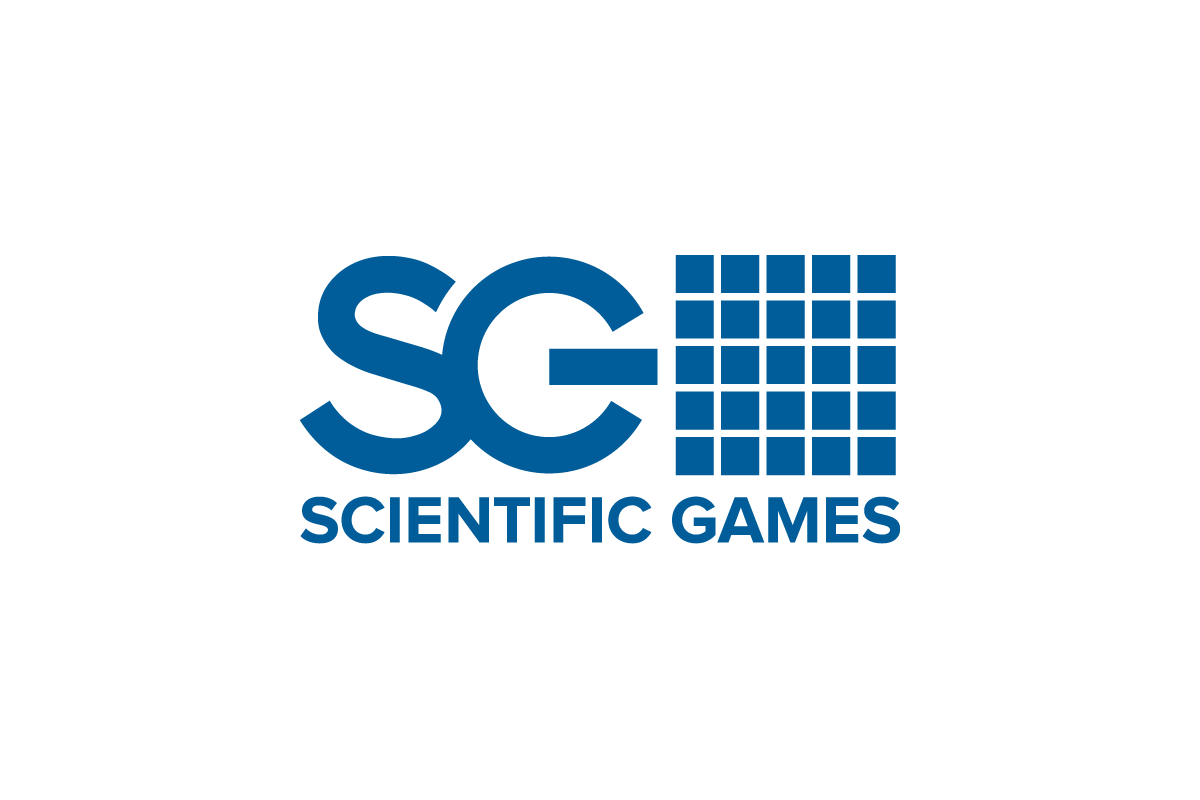
 Gambling in the USA7 days ago
Gambling in the USA7 days agoScientific Games Introduces GlowMark, All-New Fluorescent Marking System for Lottery Extended Play Scratch Games
-

 eSports6 days ago
eSports6 days agoGlobal Esports Federation confirms program for Los Angeles 2026 Global Esports Games
-

 Latest News6 days ago
Latest News6 days agoEstrelaBet to offer Opta-powered stats markets and premium live football streaming in extensive partnership with Stats Perform
-

 Gambling in the USA6 days ago
Gambling in the USA6 days agoGAMING INDUSTRY’S TOP CEOs BILL HORNBUCKLE, PETER JACKSON & JASON ROBINS TO KEYNOTE G2E 2025
-

 Latest News5 days ago
Latest News5 days agoGenius Sports Expands its Long-term Partnership with Hard Rock Bet Sportsbook
-

 Canada5 days ago
Canada5 days agoSave the Date: BCLC’s New Horizons in Safer Gambling Conference Returns November 2026
-

 Latest News5 days ago
Latest News5 days agoAviatrix partners with TQJ and joins the Bet do Milhão portfolio
-

 Latest News5 days ago
Latest News5 days agoBede Gaming awarded NASPL Associate Membership


